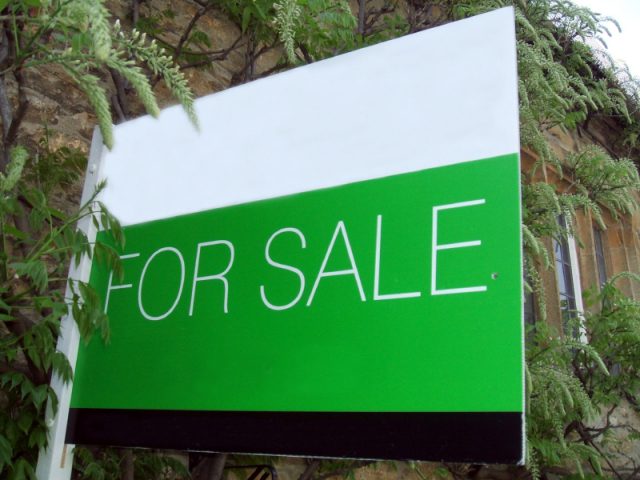Rightmove has named the fastest selling property hotspot in the UK as Dartford in Kent. Homes are selling in just 16 days in the town, taking two-thirds (33 days) off last year’s average of 49 days. Dartford has also beaten its closest rival by an impressive ten days.
The latest data from Rightmove, for January, found that Dartford is the fastest place to sell a property in the UK.
Nationally, the average time to sell a property has fallen by eight days, from 87 to 79 days.
The top ten fastest selling property hotspots outside of London is dominated by areas within London commuter counties, such as Kent, Essex and Hertfordshire. The majority of these areas have seen annual house price rises of more than 10% since January 2015.

The Fastest Selling Property Hotspot in the UK Revealed
The average asking price in Dartford has risen by 17% over the past 12 months, while the average of 16 days before a property is sold is ten days faster than the second hotspot, Grays in Essex, where it takes 26 days to sell a home – half the time it took in January last year (52 days).
The Branch Partner of Robinson-Jackson estate agent in Dartford, Robert Browning, observes: “Properties are going extremely quickly in Dartford, to the extent that around 90% of those that we have for sale are selling within the first seven to ten days of signing our contract.
“Traditionally, in the past, the majority of buyers were people moving within Dartford; now, there are a lot more people moving from London, as well as investors. There’s a handy commute to London, which will get even quicker when nearby Abbey Wood Crossrail station opens up, not to mention good links to the A2 and M25, some outstanding Ofsted-rated primary and secondary schools, and prices are more affordable than London.”
He adds: “In the past 12 months, sales have been very strong and we’ve had a busy start to the year, so this looks set to continue in 2016.”1
The most searched for area on Rightmove in January, Bristol, came in at number seven on the fastest selling property hotspots, with homes taking an average of 31 days to sell, down from 47 in January 2015.
The average time it takes to sell a property in Scotland has dropped from 97 days to 87 over the last 12 months. Meanwhile, in Wales, it has declined from 108 days to 97.
Rightmove’s data includes all properties that were changed to Sold Subject to Contract (SSTC) by agents during January 2016 and measures the timeframe since they were first listed for sale on the property portal.
But it’s not just southern commuter towns that have seen sales speeding up.
The northern towns of Warrington, Crewe, Middlesbrough and Bury have all experienced selling times drop by 30 days or more, putting them into the top ten areas where sales have sped up the most. The biggest difference in selling times was recorded in Clacton-on-Sea, where properties are now selling 45 days quicker than last year, down from 95 days to 50.
Kevin Shaw, of Leaders estate agent, comments on the findings: “As London prices continue to rise, many people make the conscious choice to add to their commute rather than their mortgage, making areas like Clacton-on-Sea, which has a direct train service to London’s Liverpool Street, a popular place for buyers.
“In particular, we have seen increased demand for three and four-bedroom family homes in this area, as families look to gain more space for their budget in an area which offers some excellent schools.”
He continues: “Crawley is equally an area we are not surprised to see on the list of fastest places to sell, as it’s a location fuelled by big businesses and major employers, therefore flats and small houses are in increasing demand. We have sold a number of properties in this area recently in under a week, whilst still achieving on average 98% or more of the asking price.”1
The fastest selling property hotspots
| Position |
Town/City |
No. of days to sell in January 2016 |
No. of days to sell in January 2015 |
Average asking price in January 2016 |
Annual price change
|
| 1 |
Dartford, Kent |
16 |
49 |
£285,782 |
16.6% |
| 2 |
Grays, Essex |
26 |
52 |
£270,224 |
13.2% |
| 3 |
Benfleet, Essex |
28 |
50 |
£333,056 |
8.2% |
| 4 |
Crawley, West Sussex |
30 |
47 |
£299,595 |
10.9% |
| 5 |
Leigh-on-Sea, Essex |
30 |
62 |
£358,440 |
13.3% |
| 6 |
Stevenage, Hertfordshire |
31 |
56 |
£280,691 |
13.5% |
| 7 |
Bristol |
31 |
47 |
£294,851 |
9.1% |
| 8 |
Watford, Hertfordshire |
32 |
48 |
£433,679 |
19.7% |
| 9 |
Rochester, Kent |
33 |
59 |
£250,334 |
10.1% |
| 10 |
Reading, Berkshire |
33 |
44 |
£367,495 |
15.4% |
At the slower end of the market, properties are taking more than 100 days to sell, with the slowest place to sell a home named as Darlington, at 132 days. St Helens came in second at 128 days, followed by Wakefield at 120 and Bradford at 119.
The Director and Housing Market Analyst at Rightmove, Miles Shipside, says: “This analysis mirrors what agents have been telling us for the past few months, that properties in the right area and on Rightmove at the right price are in high demand and selling really quickly.
“Homes in Dartford selling in just over two weeks shows just how in-demand the places within easy commuting distance to London have become over the past year. The average asking price of a property in Dartford is under £300,000, so it’s not hard to see why it’s so sought-after compared to average prices being more than double that in London.
“Further out from the capital, it seems that Bristol could be becoming the new Cambridge, which was the quickest place to sell a property two years ago. However, in the slower market areas, it’s even more important for sellers to work with their local agent and agree a realistic asking price so they have more chance of securing a buyer to speed up their own move to their next home.”1
Earlier this month, Rightmove revealed that the average asking price is almost at the £300,000 mark across England and Wales. It is expected that house prices will surpass this value in the near future.
If you are a landlord planning to leave the buy-to-let sector ahead of changes to landlord taxes, how will this new data affect how you sell your property?
We have the latest news and advice for landlords on all changes to property, buy-to-let and landlord law.
1 http://www.propertyreporter.co.uk/hero/rightmove-reveals-the-fastest-selling-hotspot-in-the-uk.html








